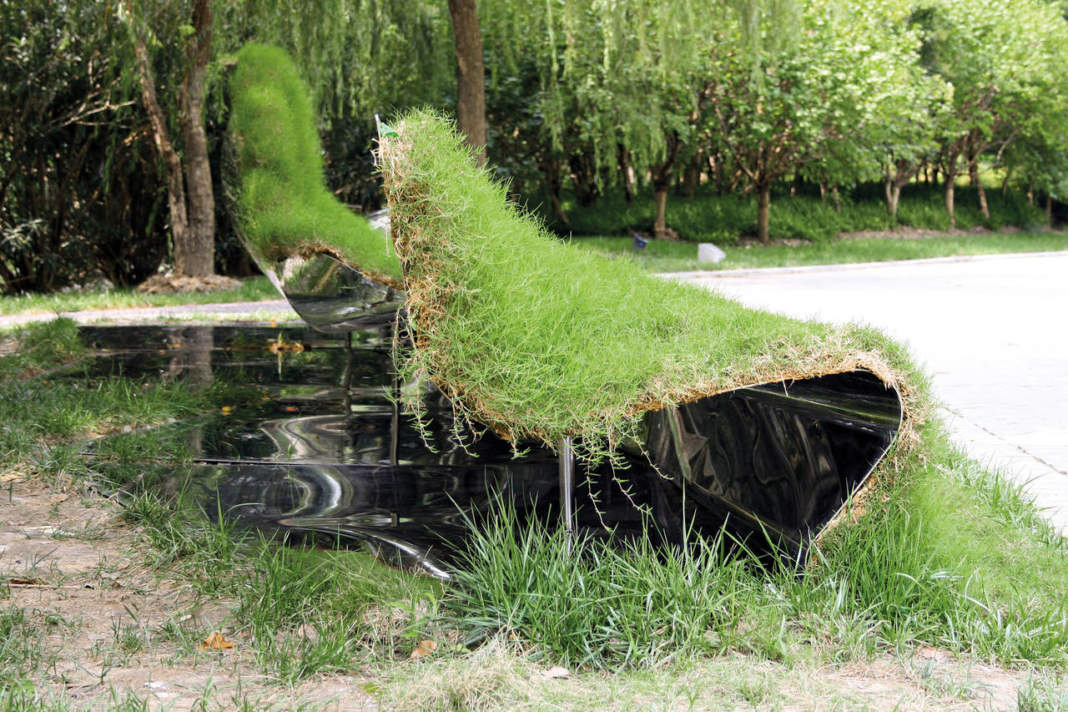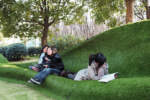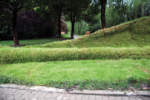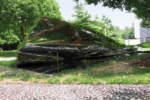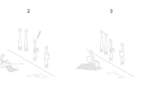architect: Ling Fan
location: Shanghai, China
Paradoxical green
Lawn is a visual substitute for soil and mud in an urban environment. It is an all-purpose hatching in urban designer's / planner's large-scale master plan drawings. But most, if not all, claim "Keep Off!" in reality, and none belong to the domain of public activities. Lawn is benign, salubrious, and controlled. It beats horror, squalidity and uncertainty. Lawn represents social commonweal. It is a strategic battlefield between democracy and power- occupying and covering surfaces with a most democratic method. Lawn is a visual reminder of natural environment in an urban context; however, it is anything but natural. It is an engineered product subjected to the rule of industrial reproduction and genetic engineering. It is produced in patches, cut into uniform squares, transported by trucks, and installed by human labors. Lawn is the most economical and efficient veil in creating a prepossessing urban image. It consumes the least material substance, but covers the largest surface area within the shortest time period. Evidence can be found from Pearl River Delta to Beijing during the Olympic Games.
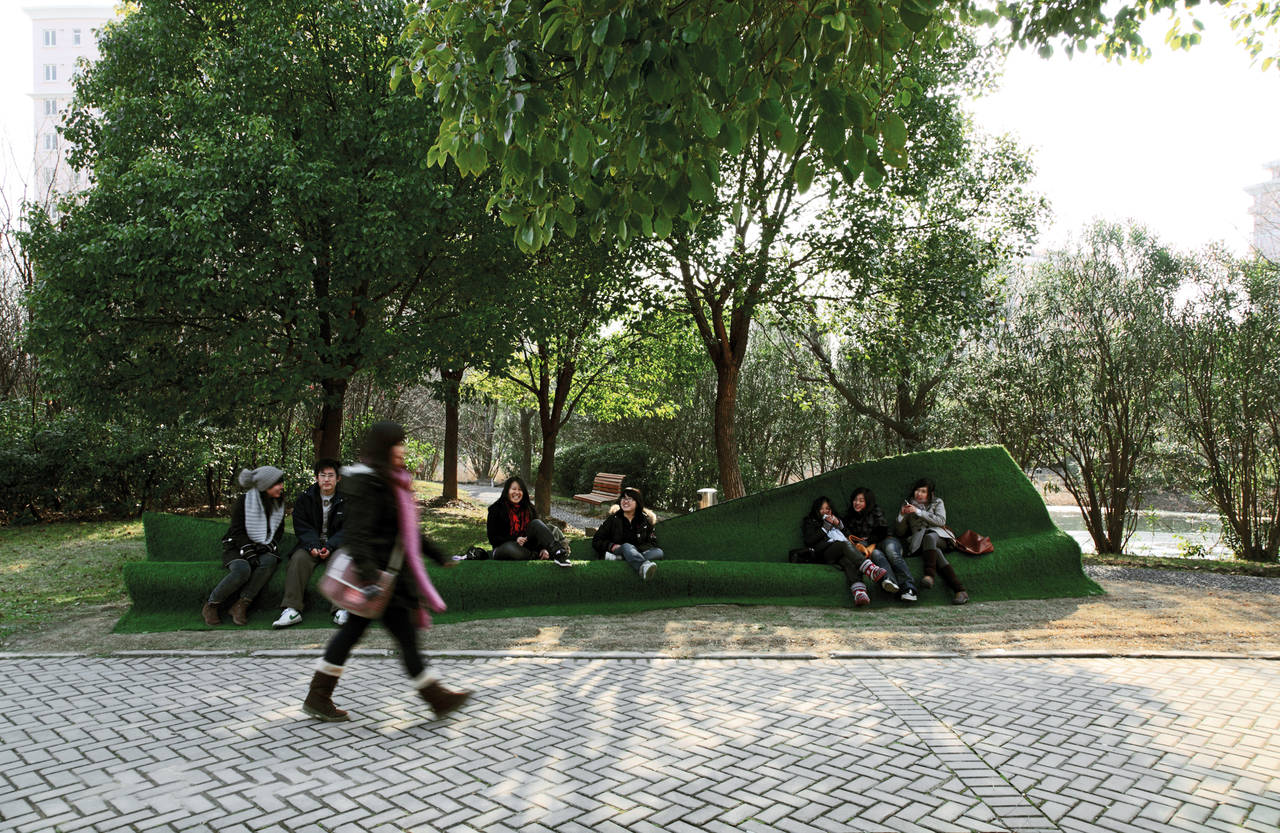
Floating green
“Floating Green” is a public artwork rethinking this condition. The flat lawn layer is detached from the ground it covers, and folded to create inhabitable urban furniture out of a flat visual icon for urbanization. Its plastic feature invites people to touch, smell, occupy and sense it. The delicate bouncy structure oscillates with joviality when people sitting on it talks, moves and laughs. It is no longer a forbidding symbol of urbanity, but turns to an emotional and sensitive participant in urban life. While an architectural artifact usually seeks singularity and monumentality, a city embraces density and multiplicity. “Floating Green” rejects to be a symbol or a sculpture; instead, it dedicates to create an interactive urban field. The availability and low cost of the material provides the work with the opportunity of mass distribution. “Floating Green” therefore shifts from a particular visual image to a generative system with the potential to produce varied individual pieces and combinations. Some generated urban furniture pieces scatter across the existing green areas in Shanghai Pudong Zhangjiang Hi-tech Park, contributing to a high quality public space with both aesthetic experience and urban function.
Fan Ling, was born in Shanghai in 1981 and graduated in the Princeton University in USA on 2007. He lives in Beijing, and doing design, review and space art practice currently. He teaches at the Central Academy of Fine Arts. His works and articles are published on various magazine Frame, Abitare, Area, A+U, Domus, 306090, Pidgin, Urban Flux, Architect, Time Architecture, Construction Journal and other famous publications in China and abroad.


